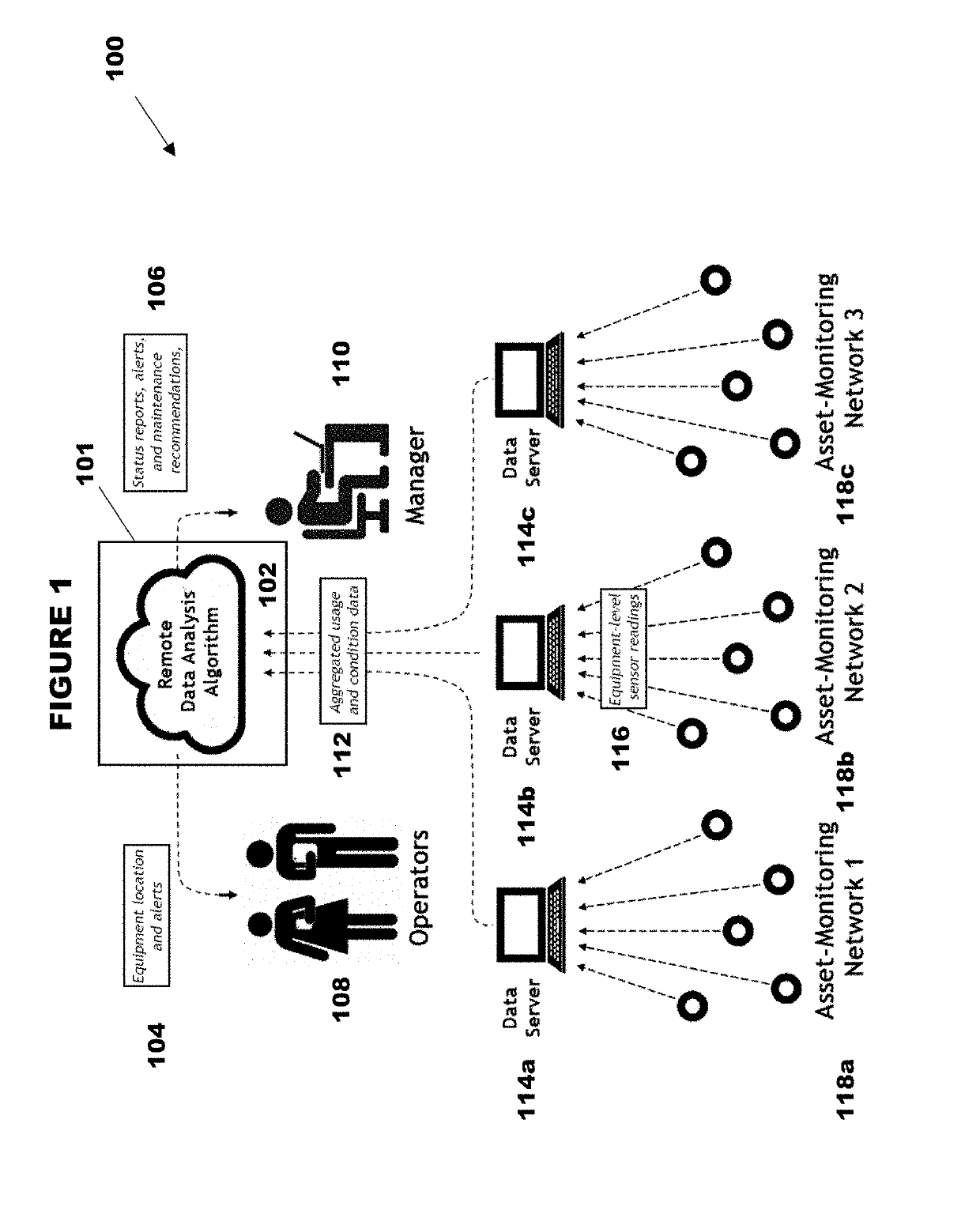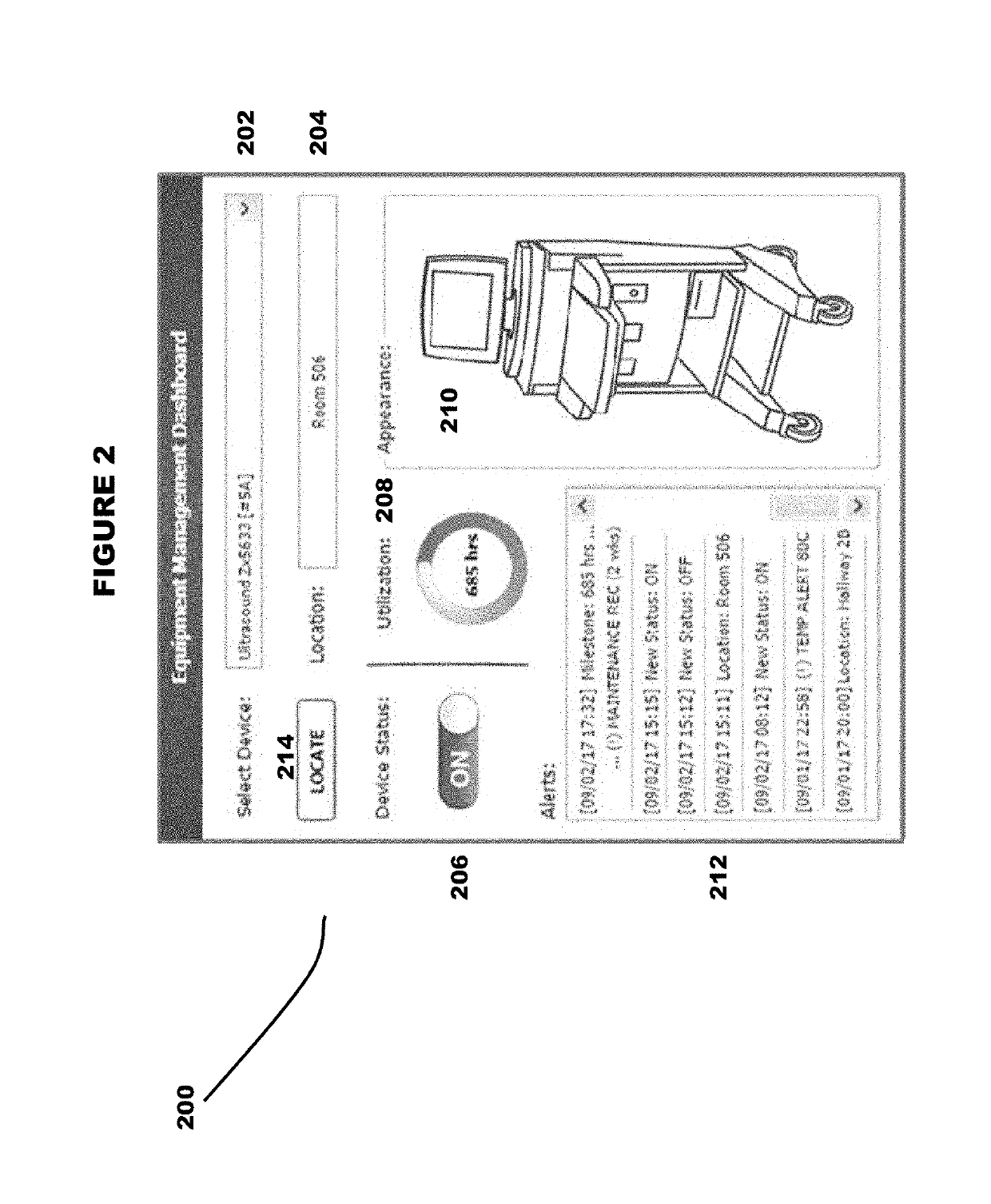System and method for asset-agnostic wireless monitoring and predictive maintenance of deployed assets
a technology applied in the field of asset-agnostic wireless monitoring and asset-based predictive maintenance of deployed assets, can solve the problems of inherently inefficient maintenance compliance and prohibitively expensive, and achieve the effects of small and more power-efficient, energy-efficient “smart” homes, and revolutionizing asset managemen
- Summary
- Abstract
- Description
- Claims
- Application Information
AI Technical Summary
Benefits of technology
Problems solved by technology
Method used
Image
Examples
Embodiment Construction
[0021]In describing the illustrative, non-limiting preferred embodiments of the invention illustrated in the drawings, specific terminology will be resorted to for the sake of clarity. However, the invention is not intended to be limited to the specific terms so selected, and it is to be understood that each specific term includes all technical equivalents that operate in similar manner to accomplish a similar purpose. Several preferred embodiments of the invention are described for illustrative purposes, it being understood that the invention may be embodied in other forms not specifically shown in the drawings.
[0022]The asset-monitoring network is the data collection arm of the system. The foundation of the network consists of two modules (the plug module and tag module) designed to be affixed or connected to equipment. Once deployed, these asset-monitoring modules form a wireless network and begin transmitting collected data. In certain embodiments, the network is a mesh network....
PUM
 Login to View More
Login to View More Abstract
Description
Claims
Application Information
 Login to View More
Login to View More - R&D
- Intellectual Property
- Life Sciences
- Materials
- Tech Scout
- Unparalleled Data Quality
- Higher Quality Content
- 60% Fewer Hallucinations
Browse by: Latest US Patents, China's latest patents, Technical Efficacy Thesaurus, Application Domain, Technology Topic, Popular Technical Reports.
© 2025 PatSnap. All rights reserved.Legal|Privacy policy|Modern Slavery Act Transparency Statement|Sitemap|About US| Contact US: help@patsnap.com



